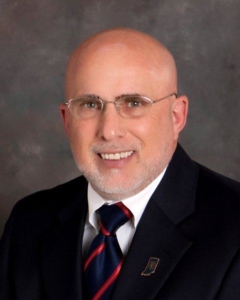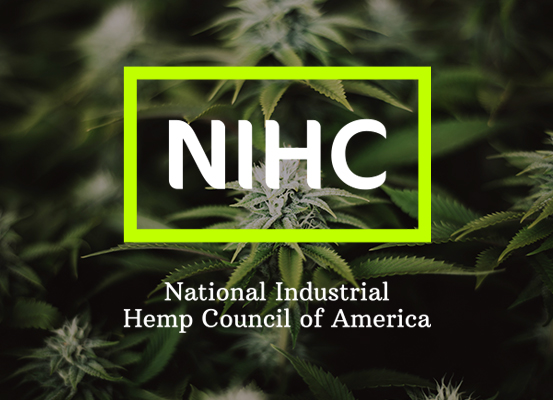Growing the Hemp Industry Begins with Quenching the Farmer’s Thirst for Knowledge
 As in most farm bureaus, at the Indiana Farm Bureau (INFB), they have a vision to keep agriculture in Indiana strong and vibrant, to provide quality food to Indiana residents and to protect the rural life they love. They are the largest grassroots farm organization in the state with more than 250,000 members, and offices in all 92 counties. Started in 1919, INFB is well-positioned as the Voice of Indiana Farmers, and well-equipped to assist the farmer to leverage industrial hemp.
As in most farm bureaus, at the Indiana Farm Bureau (INFB), they have a vision to keep agriculture in Indiana strong and vibrant, to provide quality food to Indiana residents and to protect the rural life they love. They are the largest grassroots farm organization in the state with more than 250,000 members, and offices in all 92 counties. Started in 1919, INFB is well-positioned as the Voice of Indiana Farmers, and well-equipped to assist the farmer to leverage industrial hemp.
NIHC caught up with board member Robert (Bob) White, INFB’s Director of National Government Relations, to discuss the state’s progress with the crop and the outlook for the future. In his current role, White is responsible for keeping the Indiana Congressional Delegation abreast of INFB policy. In 2017, he was chosen to be on the AFBF farm bill working group whose task it was to help shape the possible outcomes of the current farm bill. It was the sixth farm bill that White has worked on.
NIHC hopes that more Farm Bureaus get involved in the organization to bring unity and cohesion to the hemp farming community. “Indiana Farm Bureau has been a great partner and can show how a collaboration with other state-based Farm Bureaus can help promote the hemp industry overall,” says Patrick Atagi, NIHC Board Chair.
Here are Bob White’s thoughts.
Early Adaptor
White saw potential for hemp farming early on and has worked to keep his finger on the pulse of the movement. “I met Patrick Atagi, NIHC Board Chair, at a USDA’s Agricultural Outlook Forum about 5 years ago, and he told me of his idea to launch the organization. We have been connected ever since. I came on as a board member early on,” says White. White believes hemp has a big future ahead, once regulatory challenges can be ironed out. While all that’s being accomplished, White wants farmers and other farm bureaus to work together to get knowledgeable on the nuances of growing the hemp plant.
Being in the heart of the country’s farmland, White and the INFB want to help bring the state into industrial hemp farming with success.
“Indiana farmers have been discussing industrial hemp for quite a while. We are always looking for diversification away from corn and soybean, especially when prices were in the dumps about 8 years ago. We began talking about it then in Indiana through our participation in the Midwest Hemp Council. One of our INFB members, Jamie Campbell Petty, is its Executive Director, and has been working on state legislation as well as the ’18 farm bill, all to support the growth of industrialized hemp here.”
“Being involved with NIHC has also been a great resource,” says White. “One of the benefits of belonging to an organization like NIHC is that you are on the inside track on what is happening,” says White. “NIHC has basically stood the test of time as an organization. It is dedicated and deeply invested to keep industry moving forward. It provides good and factual information sources instead of disinformation, which flows from everywhere right now.”
___
“There is a solitude about growing hemp that is attractive.”
___
Hemp Rising
The thirst for knowledge on growing industrial hemp is growing, and many different avenues of education are available. “Even land grant colleges are getting involved,” says White. “They are spreading the word to educate farmers, along with local community colleges near rural areas. People want to know how to grow it and what to do with it. At the last Midwest Hemp Council meeting, we had close to 500 attendees, and half were farmers within 8 states. And, there were some who have never farmed.”
White noted how people who are not farmers by trade are leaving longstanding careers to grow hemp, mostly for CDB. “Many people want to see the fruits of their labor at the end of the day, instead of work that sometimes can take 5-6 years to see results. There is a solitude about growing hemp that is attractive.”
The lack of education and experience has unfortunately led to some of the failures of the industry that any budding niche might experience. It has also led to some of the misinformation that is pervasive in the industry today. To combat this, White wants to see more people getting educated on agronomics of hemp.
Hemp Agronomics 101
While the industry looks attractive and has that instant gratification appeal, White notes it takes more time to develop a business than most have given it so far. “It takes a while to learn to grow it. Early on, it took special treatment for soy and corn, too. We learned and they grew as commodities. There is still a lot of agronomics on the growing, planting, harvesting and processing of hemp to learn,” says White.
Farmers who are agriculturally-motivated to do something different with their land have so far tested the waters and planted crops. But the missing piece is demand. “Strong demand is missing. It takes a lot of capital investment to set up a fiber processing facility, which our state of Indiana needs. We have not reached a critical mass, not at that tipping point. More people will get involved, and as we learn, we will do what we farmers always do – we will turn it into a commodity,” notes White.
He even predicts the industry early adopters will reap the most significant profits of the industry expansion. “Hemp is a finicky crop. Those who are working out the growing process now will be able to jump back in successfully when things start to heat up. They will be ready to bring a harvest to a supplier with efficiency. It is important that farmers figure this out now while we wait for demand to rise.”
Resolving Issues
Industry obstacles are currently on their way to being resolved, slowly but surely, White says. “Organizations like the NIHC are at the forefront of these practical, legal and consumer awareness hurdles, and there is a future for industrial hemp on the horizon.”
“Legally, I don’t get much involved on that front – only when we lobby for leeway in THC levels. Right now in Indiana, we see a lot of crops being destroyed as the go-to law enforcement directive. There are other ways to handle the crop where the farmer doesn’t lose their whole investment, such as taking it to a fiber processing plant, where they take a ding on the price, but can still sell it as fiber as opposed to CBD.”
Law enforcement in Indiana, like elsewhere in the nation, is asking for testing options. They want to be able to test it on the spot to determine a course of action. “There needs to be a better certification process, for sure, and a path for law enforcement that doesn’t lead to all loads being destroyed or buried.”
On the consumer front, White sees promise in NIHC’s Hemp Checkoff program. “I think we need a checkoff just like other commodities. Farmers do see valuable benefits to a checkoff; we just want to get the timing right to launch it. Soybean, corn, beef and milk have successfully educated people about the products, and farmers saw a return on their investment.”
In the short-term, White believes farmers need to focus on the agronomics of industrial hemp – the growing, harvesting, processing, and sale. “Farmers cannot grow it and hope someone will buy it, maybe like they have done with other crops,” White says. “Let demand grow, and then plant it. Then the marketplace will also work out the issues like THC, certification, transportation and more to accommodate the end uses.”
“I think in 3 to 5 years, this industry will come into its own for the farming community,” White concludes. “They should keep paying attention, learning, discover their market, be conservative until all that is determined. Only then they can grow 1,000 acres of it.”

